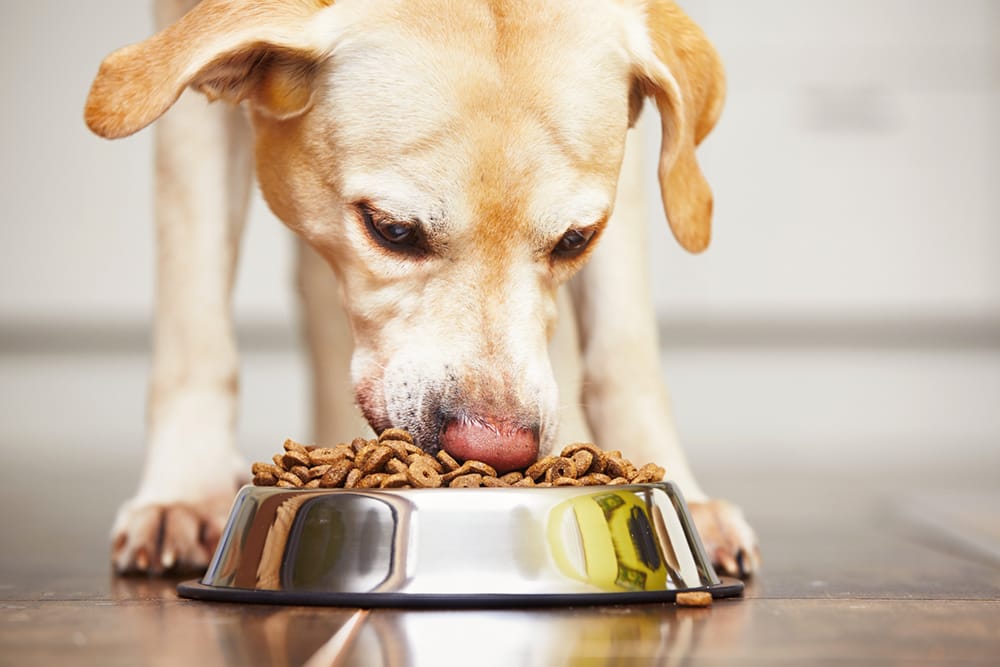Canine enrichment is the adding of actions or items to a dogs’ environment to benefit their physical or psychological health. There are six main categories of enrichment for dogs, including:
- Social enrichment: Dogs are social animals and social enrichment sees us providing opportunities for dogs to spend time with other dogs, animals and people. This helps to build self-confidence and trust.
- Cognitive enrichment: This sees us provide opportunities for thinking and problem solving, usually through the use of puzzles.
- Physical or environmental enrichment: This involves the addition of items to a dog’s everyday environment to make it more stimulating and interesting.
- Feeding enrichment: This taps into the natural scavenging/foraging instinct of the dog. By avoiding using the food bowl, your dog can be happily engaged working for his food.
- Toy enrichment: This involves the provision of toys that dogs interact with using their paws and/or mouth to achieve a reward, such as food.
- Sensory enrichment: This includes anything that stimulates the dog’s five sense of sight, touch, taste, sound and, the big one, smell.
In this article, the focus is on feeding enrichment but all forms of enrichment should be examined as options to provide your dog with a more rich and fulfilling existence. The great thing about feeding enrichment, however, is that it taps into all six categories of enrichment at least to some degree, so therefore works to enhance your dog’s quality of life in more ways than one.
A note on canine eating behaviours
We know that dogs, if free-ranging, would spend their days scavenging, foraging and gathering food. Survival in these conditions would require a high degree of problem-solving and a lot of physical activity. This of course, is in direct contrast to the lives of our domesticated dogs, who receive their meal in a food bowl at set times of day.
Yet, it doesn’t have to be like this. By appealing to their innate tendencies of scavenging and foraging we can add something more meaningful and rewarding to their mealtime experience.
Benefits of enrichment feeding
Enrichment feeding can:
- Slow down feeding, making meal times last longer than the standard ‘30 second gobble’.
- Encourage natural foraging behaviours.
- Burn more calories in the hunt for food.
- Create a sense of achievement when food is found.
- Prevent boredom which may help to reduce separation anxiety and destructive behaviours.
- Build confidence.
How to make meal times enriching
Instead of simply placing food in the food bowl, try these ideas:
- Scatter feeding: This is easier with dry food and can help to make meal times last longer. Scatter the food for their meal in as many areas as possible (both indoors and outdoors) for your dog to find.
- Snuffle mats: Snuffle mats are available from many places, relatively inexpensively. Dogs love to snuffle out food which gets buried into the large felt strips.
- Hiding food: This simply involves hiding treats or food for your dog to find. Make it simple at first, by letting your dog see you do it to build his confidence and understanding. Over time you can progress to more difficult hiding places, where he is not with you when you hide the food. You can also hide food or treats in a ball pit or a box of toys.
- Puzzles: Food puzzle toys such as Kong toys, treat balls and puzzle feeders can be challenging ways for a dog to work for his food. The dog’s usual diet can be packed into these toys and if your feed wet food you can use muffin tins. These keep the dog busy for much longer than your standard food bowl! You can make the game even more challenging by filling up the feeding toy and freezing it. Top tip: Place a straw in the food before freezing and then remove this after freezing so as to avoid choking.
- Licking: Licking is very relaxing for dogs. Wet food, low fat cream cheese or peanut butter can be spread on a lick mat and can be a helpful calming aid if there are any situations which a dog finds stressful. Of course, even for non-stressed hounds, this is a great way to provide a nutritious treat.
- Chewing: Dogs love to chew as this is a natural instinctive behaviour for them. Chewing can also act as a stress reliever and may help prevent boredom when you need to be busy with something else. Dog chews can certainly help to keep your pup busy for some time!
Did you know?
There is evidence that enrichment can help delay the progression of dementia in older dogs. Dogs with canine cognitive dysfunction can still have enrichment in their lives, but try not to include anything that requires very complex problem solving. Indeed, food toys designed for puppies are perfect for older dogs too. There are also specifically designed Kongs for older dogs.
Final thoughts
Enrichment should be challenging but not frustrating, so start easy and gradually increase the difficulty of the challenge. Help your dog to be successful, and build from there. For example, start by using enrichment methods for just one meal a day. There is no right or wrong way to use enrichment feeding, just play around and find out what works best for your dog and what they enjoy the most! Our canine companions are super smart animals an providing a variety of ways of feeding can provide crucial stimulation for them and really boost their quality of life.


